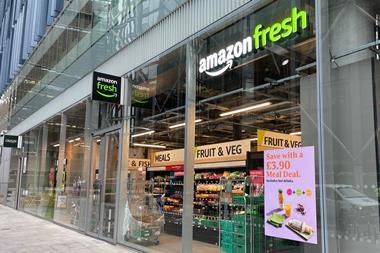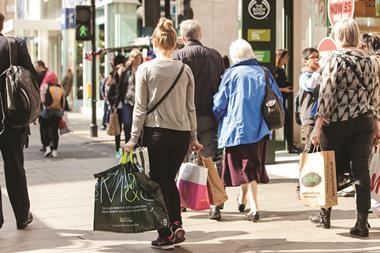The number of vacant stores rose in the second quarter of 2023 as 6,000 UK retail outlets closed over five years, according to figures from the BRC-LDC Vacancy Monitor.
The overall rate of store vacancies across the country increased to 13.9% in the second quarter of 2023, up 0.1% from the first quarter and the same period last year.
Shopping centre vacancies remained the same as the previous quarter at 17.8%, while high street vacancies increased to 13.9%, 0.1% worse.
Retail parks remained the location with the lowest vacancy rate, dropping to 8.1% from 8.7% quarter on quarter.
Greater London, the South East and the East of England had the lowest vacancy rates at 10.8%, 11.4% and 13% respectively, while the highest vacancy rates were in the North East, Wales and Scotland at 17.5%, 17% and 15.9%.
BRC chief executive Helen Dickinson said: “The past five years saw Britain lose 6,000 retail outlets, with crippling business rates and the impact of the Covid lockdowns a key part of decisions to close stores and think twice about new openings.
“The North and Midlands continue to see the highest amount of empty storefronts. London’s vacancy rate remains the lowest, improving over the last quarter thanks to the opening of new flagship stores, more office workers and tourists visiting the capital.”
“The government announcement earlier in the week about making changes of use to vacant units easier is welcome but it’s important local councils have a cohesive plan, and don’t leave gap-toothed high streets that are no longer a customer destination and risk becoming inviable. The government should go one step further and freeze rates bills next year. ”
LDC commercial director Lucy Stainton added: “The headline findings from Q2 are unlikely to have come as a surprise to anyone, with economic pressure from rising interest rates and inflation already mounting as the year began.
“Current challenges to businesses have been compounded by tightening discretionary spend and a dip in confidence among consumers. The economic headwinds that have made the headlines have filtered into the data, reflected in a slight rise in the overall vacancy rate.”
“The high street has seen some of the most notable impacts, with rising rents and increased competition putting pressure on small and independent businesses, which may struggle to meet high operating costs. Across all location types, vacancy has reached critical levels, highlighting an ever-increasing need to redevelop units to breathe life back into retail destinations.
“With the continuing trend in mind, we do not foresee any improvements to vacancy rate in future. However, given that the latest rises in vacancy have not been particularly significant, we anticipate that any increases in the near future will be gradual.”

























No comments yet